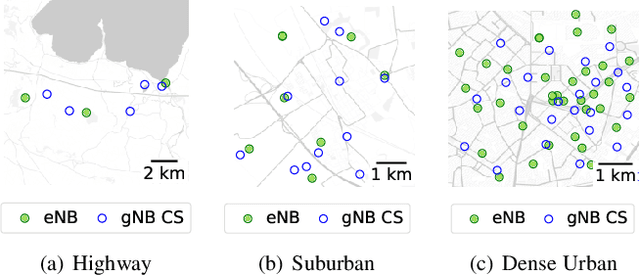Albert Banchs
ARES: Autonomous RIS solution with Energy harvesting and Self-configuration towards 6G
Mar 02, 2023Abstract:Reconfigurable Intelligent Surfaces (RISs) are expected to play a crucial role in reaching the key performance indicators (KPIs) for future 6G networks. Their competitive edge over conventional technologies lies in their ability to control the wireless environment propagation properties at will, thus revolutionizing the traditional communication paradigm that perceives the communication channel as an uncontrollable black box. As RISs transition from research to market, practical deployment issues arise. Major roadblocks for commercially viable RISs are i) the need for a fast and complex control channel to adapt to the ever-changing wireless channel conditions, and ii) an extensive grid to supply power to each deployed RIS. In this paper, we question the established RIS practices and propose a novel RIS design combining self-configuration and energy self-sufficiency capabilities. We analyze the feasibility of devising fully-autonomous RISs that can be easily and seamlessly installed throughout the environment, following the new Internet-of-Surfaces (IoS) paradigm, requiring modifications neither to the deployed mobile network nor to the power distribution system. In particular, we introduce ARES, an Autonomous RIS with Energy harvesting and Self-configuration solution. ARES achieves outstanding communication performance while demonstrating the feasibility of energy harvesting (EH) for RISs power supply in future deployments.
LOKO: Localization-aware Roll-out Planning for Future Mobile Networks
Jan 11, 2022



Abstract:The roll-out phase of the next generation of mobile networks (5G) has started and operators are required to devise deployment solutions while pursuing localization accuracy maximization. Enabling location-based services is expected to be a unique selling point for service providers now able to deliver critical mobile services, e.g., autonomous driving, public safety, remote operations. In this paper, we propose a novel roll-out base station placement solution that, given a Throughput-Positioning Ratio (TPR) target, selects the location of new-generation base stations (among available candidate sites) such that the throughput and localization accuracy are jointly maximized. Moving away from the canonical position error bound (PEB) analysis, we develop a realistic framework in which each positioning measurement is affected by errors depending upon the actual wireless channel between the measuring base station and the target device. Our solution, referred to as LOKO, is a fast-converging algorithm that can be readily applied to current 5G (or future) roll-out processes. LOKO is validated by means of an exhaustive simulation campaign considering real existing deployments of a major European network operator as well as synthetic scenarios.
 Add to Chrome
Add to Chrome Add to Firefox
Add to Firefox Add to Edge
Add to Edge